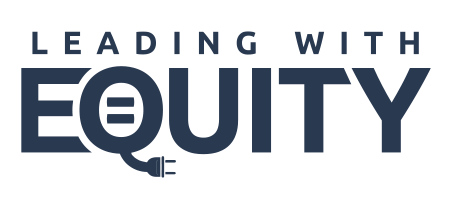The Problem:
Too many Americans struggle to pay energy bills because they live in inefficient buildings while also facing rising transportation costs and inadequate transit options. Many low-income communities and communities of color lack easy access to comprehensive programs and services from their utilities, states, or cities. These historically under-resourced communities are often excluded from energy planning and decision making, which perpetuates the cycle of exclusion, underinvestment, and inequitable clean energy policy and program outcomes.In defining energy equity, ACEEE uses the four dimensions of equity outlined in the 2014 Equity in Sustainability report by Angela Park and her colleagues at the Urban Sustainability Directors Network. These categories are:
- Procedural equity, which embeds inclusive, accessible, authentic engagement and representation in processes to develop or implement programs and policies.
- Distributional equity, which ensures programs and policies result in fair distributions of benefits and burdens across all segments of a community, prioritizing highest need.
- Structural equity, which institutionalizes accountability so that decisions are made with a recognition of the historical, cultural, and institutional dynamics and structures that have routinely advantaged privileged groups and resulted in chronic, cumulative disadvantage for subordinated groups.
- Transgenerational equity, which considers the impact of policies and programs on future generations, ensuring solutions create benefits for and do not place unfair burdens on future generations. (Note: In the Leading with Equity Initiative, metrics related to transgenerational equity do not have a category of their own but are intertwined with the structural, distributional, and procedural categories.)
More details on the definition of energy equity used in ACEEE’s research and the dimensions of energy equity that guide our research can be found on our Energy Equity page. In addition, in documents related to the initiative, we chose to use the terms “under-resourced”, “under-served”, “disinvested,” and “climate vulnerable” to emphasize the role of institutions in creating systemic barriers that prevent the most burdened communities from accessing resources. We also want to highlight the disproportionate impact climate change will have on these communities. We recognize that these terms do not encapsulate the rich diversity of the communities listed.
For over 16 years, ACEEE has released numerous scorecards and other progress reports to benchmark and drive clean energy action among states, localities, and utilities. Through these efforts, we aim to identify best practices and set a high bar for recognizing clean energy leaders. Even so, we can do better. In early 2021, to help ensure that everyone has equitable access to and benefits from clean energy investments, ACEEE—with support from the Barr Foundation, the Kresge Foundation, and The JPB Foundation and in collaboration with Kinetic Communities Consulting and AEClinic—launched our Leading with Equity Initiative.

The Leading with Equity Initiative aims to achieve the following goals:
-
Ensure frontline communities, including climate vulnerable communities, communities of color, low-income communities, and other historically under-resourced communities, are represented and are helping to drive the development of improved equity-related metrics
-
Better understand current utility, state, and city capacity to report data on desired equity-related metrics
-
Implement proposed changes in ACEEE’s city, state, and utility scorecards, setting the bar in a way that represents real performance on the metrics that matter most to communities.
During the first year of this two-year project, we convened community-based organizations, advocates, and utilities to jointly define success for equitable decarbonization, identify barriers to accessing equity-related data, and prioritize equity-focused metrics for inclusion in ACEEE’s utility, state, and city scorecards.
In December 2021, we published the key findings from the first year of our initiative.
This paper highlights what we learned from our workshop conversations with community-based organizations and utilities as well as our ongoing research efforts. It lays out all the equity-related metrics identified through the process, as well as the metrics that we plan to prioritize in future scorecards. In addition to providing a transparent overview of our work in 2021, the paper discusses how we plan to move forward in the next year.
In 2022, we published strategy documents for the State, Utility, and City Scorecards. Each strategy document provides an overview of the current state of equity metrics in each scorecard and the pathway each scorecard team will follow to add new equity-centered metrics.
Sign Up for our Leading With Equity Newsletter
Interested in learning more about our equity metrics efforts and/or want to share your own recommendations around improving and expanding equity metrics for city, state, and utility decarbonization? Please fill out this form to be kept up to date on the initiative and ways to be involved.
What’s Next?
In the first half of 2022, we published strategy documents for the State, Utility, and City Scorecards. Each provides an overview of the current state of equity metrics in each scorecard and the pathway each scorecard team will follow to add new equity-centered metrics. As each scorecard nears publication, we will also publish the proposed equity-related metrics for the 2022/2023 editions on this landing page. The next State Scorecard will be published in late 2022, Utility Scorecard in spring 2023, and City Scorecard in late 2023. We will continue to seek input from community-based organizations and the broader clean energy community to ensure that our new metrics are leading to more equitable policy and program outcomes. Our work will include additional workshops with community-based organizations to provide feedback on the roadmaps and continue collaboration to advance the use of equity metrics.

Accountability and Transparency Commitment
ACEEE is committed to ensuring that the priorities of community-based organizations are integrated into our upcoming scorecards through a transparent and collaborative process. Adapted from the Sierra Club’s Shared Accountability Framework, which was developed in partnership with community-based organizations in Miami, we are committed to the following pillars of accountability:
-
Evaluation: ACEEE will take concrete steps to plan for and measure progress toward incorporating equity metrics into our scorecards. We will ensure that these metrics align with the priorities of CBOs and frontline communities.
-
Transparency: ACEEE will publicly express our commitment, plan, and outcomes related to this goal through updates and additional opportunities for stakeholder engagement and feedback.
-
Relationships: We will engage with and listen to frontline communities and CBOs to ensure that our research and technical assistance best supports and bolsters their advocacy needs through mutually supportive partnerships.
-
Improvement: ACEEE will continue to revise our scorecards and explore new ways of measuring success with each edition. We recognize that this is a continuous process and are committed to iterating on the metrics in our scorecards in coming years to move energy policy toward a more equitable future.
Partner Research
In addition to holding workshops to refine next steps on equity metrics, partners explored research on how to evaluate programs through the lens of equity impacts. The following white paper provides more information:
-
White Paper by Applied Economics Clinic, October 2021: Recommendations for Cities and States to Improve Equity Evaluation and Reporting in Energy Efficiency Programming